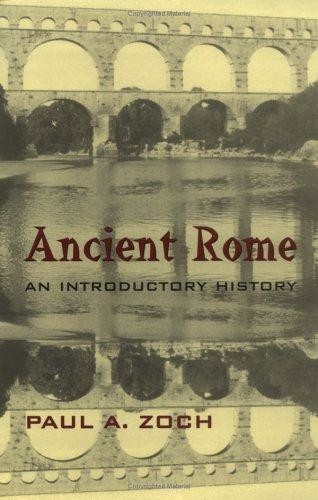In my first year of teaching high-school Latin, I gave my second-year students a bonus question on a translation test: "For three points, identify when the Roman Empire was at its height." I decided to accept any answer from 100
B.C.
to
A.D.
200. The answers were distressing: one senior, a good but not great student, answered 3000
B.C.
Only three students out of the class of twenty-two received the three points. The students giggled at their own ignorance of basic history. I realized that if even second-year Latin students do not know such basic information, few other high-school students doand I must confess that when I was in high school, I was not much better off. Such was the genesis of this book.
|
Ancient Rome: An Introductory History cannot
hope to compete in the quality and depth of its scholarship with the excellent histories written by world-renowned scholars such as Cary, Scullard, Mommsen, and Grant, by all those involved in the massive
Cambridge Ancient History
, and by others. However, by the inclusion of stories, legends, and myths from original sources, it does offer high-school students and general readers greater accessibility to the factual history of ancient Rome, for it seeks to entertain at the same time as to inform. This book presents a traditional, chronological history of ancient Rome, illustrating the major and minor themes, events, and personalities through generous selections of Latin literature and other original sources in English translation. Readers will learn about Roman history from Aeneas through Marcus Aurelius, meeting along the way such characters and personalities as Tarquinius Superbus, Lucretia,
|
|


